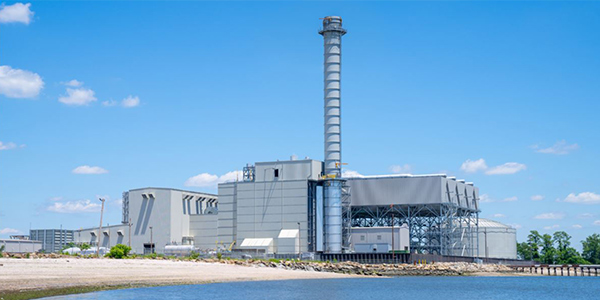By Rich Heidorn Jr.
Public Service Enterprise Group CEO Ralph Izzo expressed skepticism Wednesday that New Jersey utilities will abandon the PJM capacity market over the expanded minimum offer price rule (MOPR).
“We will work cooperatively with the Board of Public Utilities in New Jersey and PJM to find the best path forward, whether that is to bid and clear the capacity auction under a business-as-usual scenario, or seek the FRR [fixed resource requirement] alternative in partnership with New Jersey to preserve its preferred zero-carbon resources,” Izzo said during PSEG’s fourth-quarter earnings call.
“New Jersey would have to have either a zonal or statewide FRR, which to me is suboptimal … because now you’re going to be solving a small problem with a rather large tool,” Izzo said. “If your aspirations are for 7,000 MW of offshore wind, you need to pull out 15,000 MW from the capacity market. Seems to be a bit of overkill.”
Taking the FRR option could leave behind a residual capacity market that is “grotesquely oversupplied … crushing capacity prices,” he added. “I mean, there’s just a ton of questions.”
Izzo noted that New Jersey will not have offshore wind collecting subsidies until 2024. “So, it doesn’t start paying double [for capacity] until the second auction from now. … I do think that there will be adequate time for New Jersey to avoid double paying for capacity 2024. It won’t be a walk in the park.”
FERC ordered PJM in December to expand its MOPR to include new state-subsidized resources, as well as existing nuclear units receiving zero-emission credits (ZECs) such as PSEG’s Hope Creek and Salem 1 and Salem 2 plants.
“The ability of the nuclear plants to clear in [PJM’s capacity market] will depend on the level of the applicable generic offer floors, as well as the offer floor levels that would be derived via the unit-specific exception, should one or more of the units elect that option,” the company said in its 10-K filing.

Bridgeport Harbor 5, a 485-MW combined cycle plant in Connecticut that began operating last year, is PSEG’s largest generating unit in New England. | PSEG
Izzo said he is optimistic because New Jersey’s Energy Master Plan expects nuclear power to be an important generation source through 2050, when the state hopes to reach its goal of 100% “carbon neutral” electric generation. “So that has to be economically supported,” he said. “No. 2, we have fossil assets that are located close to the load centers and have deliverability advantages that will [be] important factors in any capacity reliability construct that is created.
“And let’s remember that the underlying rationale for FERC’s action was to eliminate price suppression caused by units that were receiving out-of-market payments,” he added.
While Izzo said the company is “strongly supportive” of New Jersey Gov. Phil Murphy’s goals of reducing electric usage by 2% and gas usage by 0.75% in five years, he seemed to question the master plan’s long-term goal of cutting gas use to one-fifth of current consumption by 2050.
“From a practical standpoint, 80% of New Jersey households already use natural gas to heat their homes or to cook, and in fact, many of our customers converted to natural gas from using oil or electricity for these purposes,” he said. With a conversion cost of at least $10,000 per customer, the transition “would be a significant economic burden on every household and contrary to most customers’ personal preferences,” he said.
Earnings
PSEG reported operating earnings of $330 million ($0.64/share) in the fourth quarter, up from $284 million ($0.56/share) in 2018. For 2019, the company reported operating earnings of $1.67 billion ($3.28/share) versus $1.58 billion ($3.12/share) the year before.
The company said its ZEC revenues added 6 cents/share for the quarter and 18 cents/share for the year. The payments, equivalent to about $10/MWh, are recovered through a non-bypassable distribution charge of 0.4 cents/kWh.
The BPU has authorized ZEC payments through May 2022, a decision that has been appealed by the Division of Rate Counsel. State law requires PSEG to reapply for any subsequent three-year periods.
Net income for 2019 included a loss recorded on the third-quarter sale of PSEG Power’s 800-MW interest in the coal-fired Keystone and Conemaugh coal-fired units in Pennsylvania. The company said it expects to eliminate all coal-fired generation from its fuel mix by mid-2021 with the early retirement of Bridgeport Harbor 3, Connecticut’s last coal-fired generator.
The company said it has reached an agreement to sell its 200-MW interest in the Yards Creek pumped-storage generating station in New Jersey, which it owns jointly with FirstEnergy. “The sale reflects our ongoing commitment to optimize the value of the generating fleets,” the company said. “These proceeds will add to the improved cash flow at Power, given the completion of the combined cycle construction program and Power’s declining capital needs.”
PSEG Power completed its 1,800-MW combined cycle gas turbine construction program with the addition of the Keys Energy Center in Maryland and Sewaren 7 in New Jersey in 2018, as well as Bridgeport Harbor Station Unit 5 in Connecticut last year.
Izzo took note of ISO-NE Capacity Prices Hit Record Low.)
But he said the 485-MW Bridgeport Harbor 5, the company’s largest unit in New England, “cleared the 2019/20 auctions and locked in $231/MW-day capacity payments for seven years, thereby limiting our exposure to this latest auction result.”
Earnings call transcript courtesy of Seeking Alpha.



